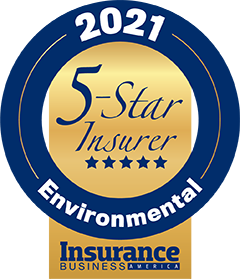
America's Best Hazardous Materials Insurance
Five-Star Awards : Environmental Insurance
Hazardous materials/waste
Often referred to as disposal liability coverage or non-owned disposal site (NODS) coverage, insurance for hazardous materials or waste is typically “incorporated into the overall PLL and CPL products and is readily available from all carriers,” says RT Specialty’s Jeff Slivka. “[I] have not seen any trend in claims and anticipate no changes to this coverage.”
“Through their entire life cycle, hazardous materials present various and unique exposures for any entity manufacturing, storing, transporting, using and/or disposing materials that are deemed hazardous to human health and the environment,” adds Aspen’s Michael Padula. “The environmental marketplace offers many products to provide protection for any segment of hazardous materials commerce chain, with unique enhancements and coverage parts to provide broad and comprehensive environmental liability protection. In some instances, general liability can be combined with traditional pollution liability in one comprehensive coverage product for manufacturers/distributors of hazardous materials.”
5-Star Excellence Awards
- Beazley
- Berkley Environmental
- Crum & Forster
- Freberg Environmental
- Virtue Risk
What is hazmat insurance?
Different federal agencies – the Department of Transportation, the Occupational Safety and Health Administration, and the Environmental Protection Agency – have developed regulation around the disposal and transportation of hazardous materials. Depending on the regulatory agency, the exact definition of hazardous materials may vary. Contractors, truckers, and other entities have to follow specific regulations around their use, disposal, and transportation.
What must be included in a hazardous materials plan?
Haulers of hazardous materials must meet certain insurance requirements and, depending on the cargo, usually have to provide insurance liability from $1 million-$5 million. Cargo haulers should contact the shipper, or cargo provider, or learn the definition of hazmat in hazardous materials regulation under 49 CFT 177 if they are not sure of the classification of cargo. Possible incarceration, fines, or civil penalties are consequences of failing to comply with insurance requirements for hauling hazardous materials.
Typically, a hazmat insurance policy should cover liability for unloading and loading cargo; in-transit coverage; ongoing contamination; and site pollution clean-up.
Hazardous materials are defined by the secretary of transportation as “any substance that poses an unreasonable risk to health and safety or property.” Some examples of hazardous materials include chemicals; contaminated products or soil; combustible gases; fertilizers; paint; poisonous chemicals; adhesives; cleaning compounds; dynamite; propane; and petroleum products.
How much does this insurance generally cost?
Hazmat hauling faces tough regulations by federal and state laws in the name of keeping the public safe. Restrictions are added around how hazardous freight should be transported and the kind of insurance policy that can be used. Legally, hazmat trucks are mandated to provide insurance liability from $1 million-$5 million, depending on the class of hazardous materials being hauled. If a fuel tanker crashes on a highway, for example, it is easy to imagine the astronomical costs of damages.
What does this insurance generally cover?
A good hazmat truck insurance policy, for example, will provide the following types of coverage:
Pollution liability. A must-have provision for any properly designed hazmat truck insurance policy, pollution liability will provide coverage for the costs of cleanup resulting from an accident. This includes any damage as a result of pollutants that are in, on, owned by, transported by, unloaded or loaded by a covered vehicle.
Excess liability. This type of liability gives an added layer of liability coverage that is in excess of the hazmat trucking company’s primary liability limits, usually $50 million.
Collision and comprehensive. This protects a trucker’s trailer and tractor in the event of a crash or from fire, vandalism, theft, overturn, upset, and various causes of loss.
Hazmat hauler’s general liability. Usually included in contracts, hazmat hauler’s general liability provides coverage for non-trucking-related claims, like wrongful delivery of liquids, for example.
Combined deductibles. Companies can, based on this coverage, pay just 1 deductible when a loss happens involving cargo as well as physical damage.
Loading and unloading. This is coverage for cargo that is being unloaded or loaded.
Medical payments or personal injury protection. If a driver and/or the passengers in a vehicle are injured in an accident, this type of protection will pay for medical and other expenses, despite who is at fault for the accident.
Downtime. Companies can include downtime coverage to their physical damage policy to add a layer of protection against lost income if the company has a covered loss. For instance, if a covered loss leaves a vehicle inoperable for a significant time, downtime coverage can help companies keep truck payments and bills current.
Loan or lease gap. Since trailers and trucks can depreciate more quickly than the equipment financed value, this type of coverage assures a total vehicle loss doesn’t leave the owner in deep trouble with their lease or loan.
Truck rental reimbursement. When added to a physical damage policy, truck rental reimbursement coverage can allow companies to rent replacement trailers and trucks while getting reimbursed for a big chunk of the rental cost.
Keep up with the latest news and events
Join our mailing list, it’s free!


